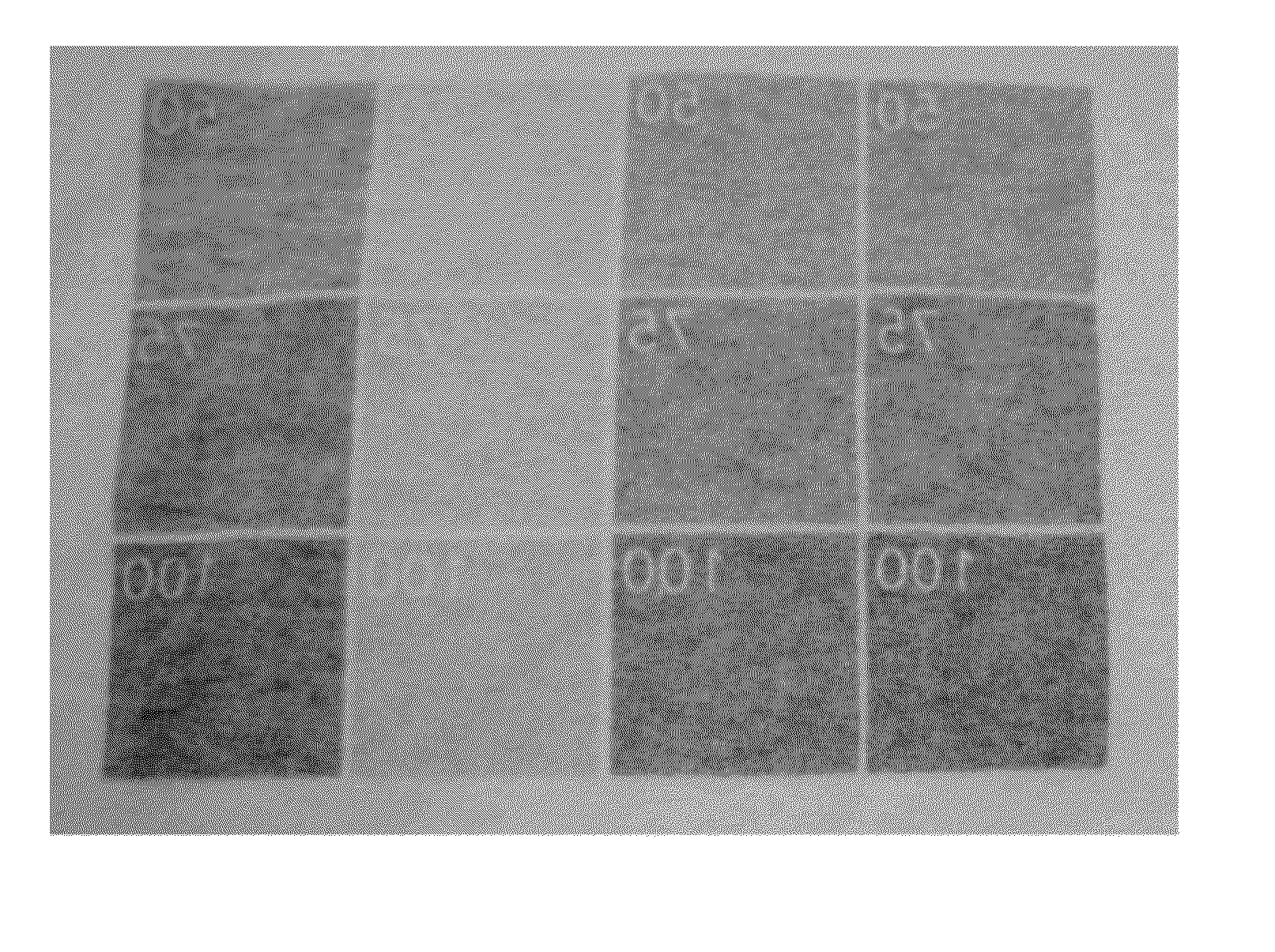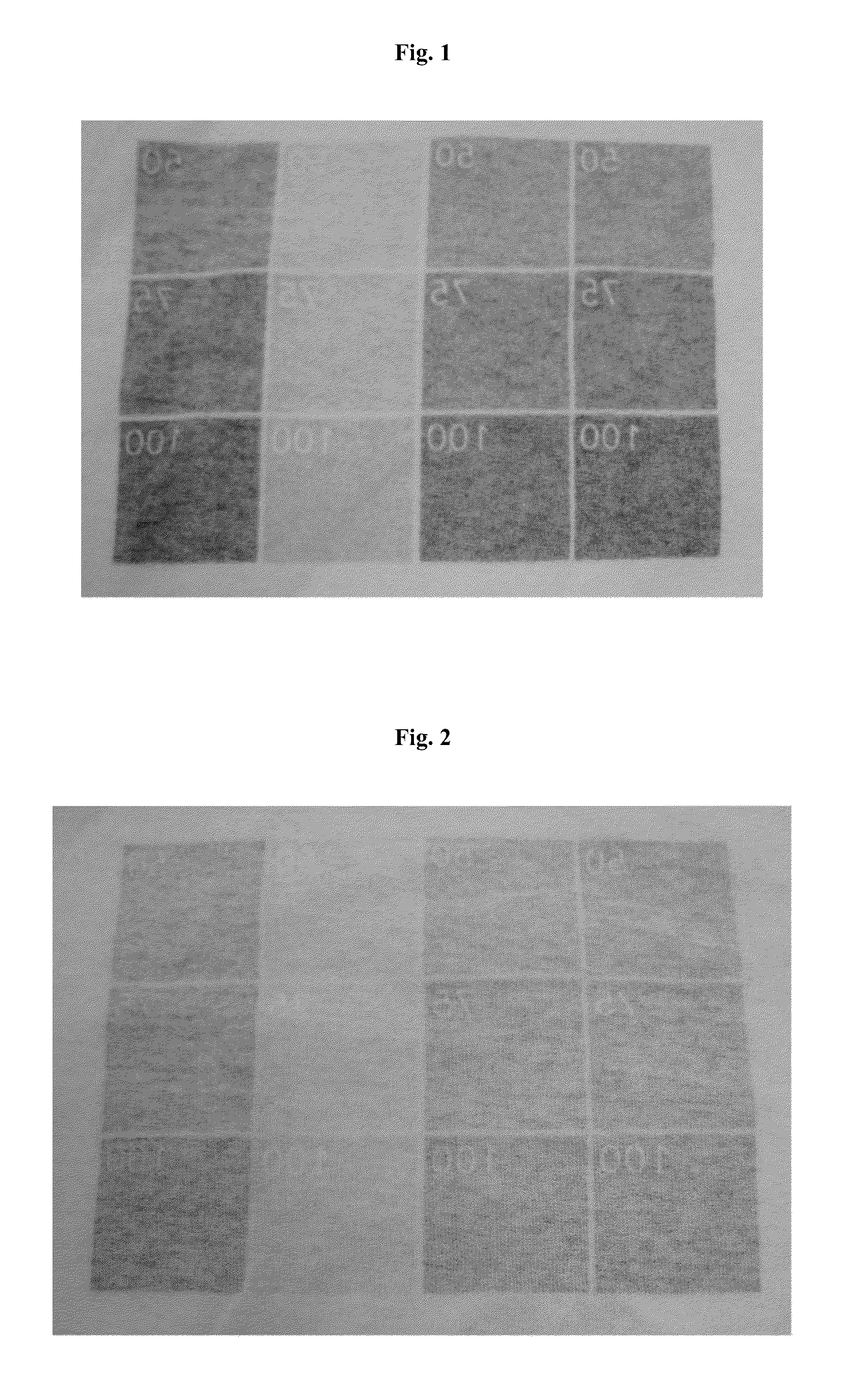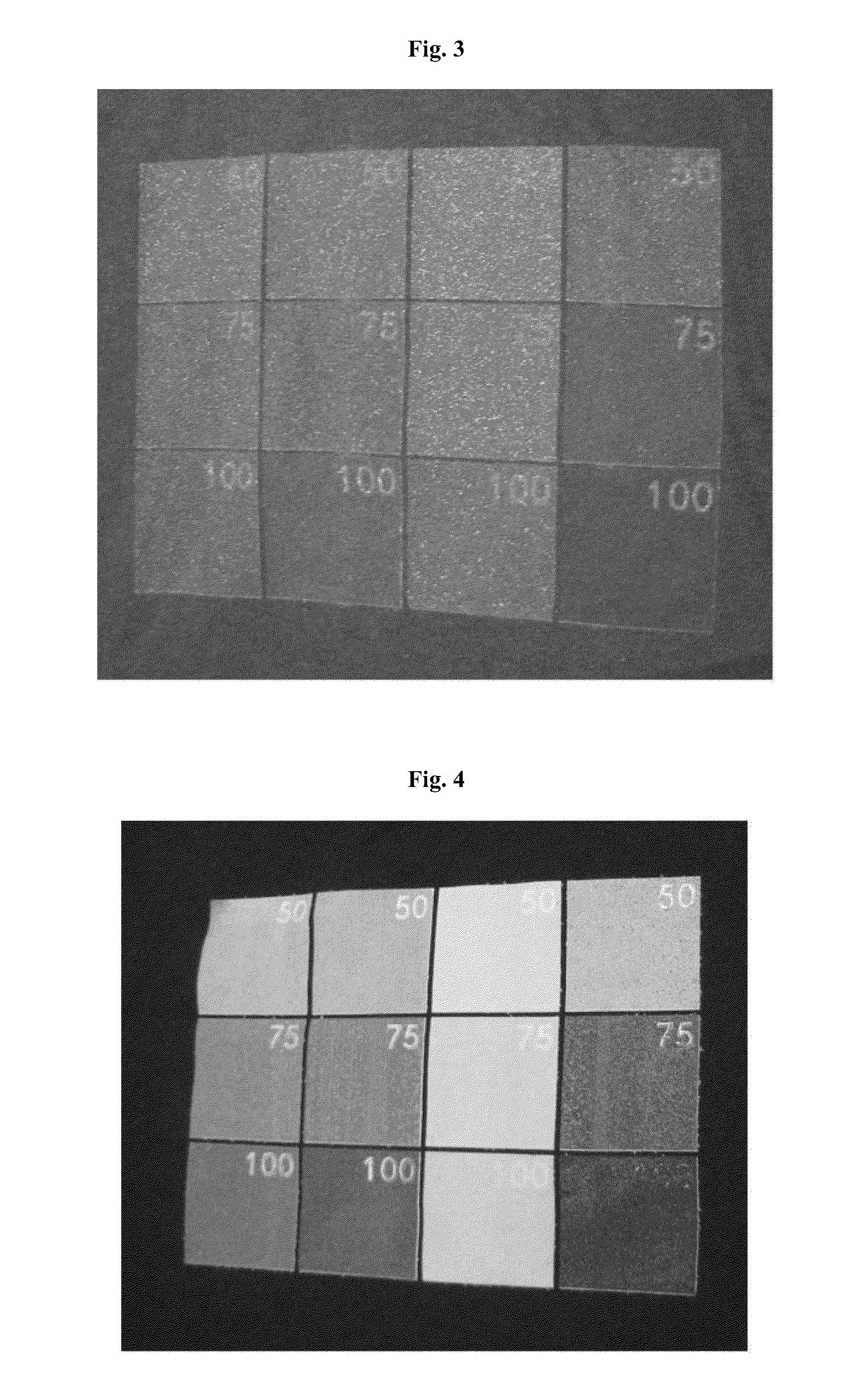Process for printing images on dark surfaces
a printing process and dark surface technology, applied in the field of printing, can solve the problems of only partially meeting the requirements of the above, unable to meet the contemporary demands of the fashion industry, and the “footprint” within the reference color spa
- Summary
- Abstract
- Description
- Claims
- Application Information
AI Technical Summary
Benefits of technology
Problems solved by technology
Method used
Image
Examples
example 1
[0273]A non-aqueous solvent-based ink composition, having the four basic formulations of cyan, magenta, yellow and black colors (CMYK) was used.
[0274]A 100% cotton shirt was mounted onto the machine, as described above, and a multicolor image was directly printed on the fabric surface using an inkjet printing heads.
[0275]The printed image was then subjected to curing, by heating to 150-180° C. for 180 seconds using an infrared curing unit.
example 2
[0276]The same ink composition as in Example 1 was used for printing the same image, upon wetting the cotton shirt with an exemplary wetting composition according to the present invention.
[0277]Thus, a 100% cotton shirt was mounted onto the machine, as described above. 100% isopropanol was uniformly applied onto an area of the cotton fabric, using a spraying nozzle, at a density of 0.25 grams per cm2 area of the cotton fabric.
[0278]Immediately thereafter, while the cotton fabric was still wet with the isopropanol, the image was printed on the wet area of the shirt surface using an inkjet printing head and the ink composition described above.
[0279]The printed image was then subjected to curing, by heating to 150-180° C. for 180 seconds using an infrared curing unit.
example 3
[0280]A non-aqueous solvent-based ink composition having the four basic formulations of cyan, magenta, yellow and black colors (CMYK) was used.
[0281]A 100% cotton shirt was mounted onto the machine, as described above, and a multicolor image of squares of each color formulation was directly printed on the fabric surface using an inkjet printing heads.
[0282]The printed image was then subjected to curing, by heating to 150-180° C. for 180 seconds using an infrared curing unit.
[0283]In a parallel test, the same process was repeated while uniformly applying 100% isopropanol onto an area of the cotton fabric prior to applying the ink formulations, as described hereinabove in Example 2.
[0284]The optical density of each of the colored squares, in each of the printed shirts (with and without pre-treatment with a wetting composition according to the present invention) was measured, using Shamrock Color Print 415. Table 1 below presents the optical densities values that were recorded and clea...
PUM
| Property | Measurement | Unit |
|---|---|---|
| diameter | aaaaa | aaaaa |
| surface tension | aaaaa | aaaaa |
| surface tension | aaaaa | aaaaa |
Abstract
Description
Claims
Application Information
 Login to View More
Login to View More - R&D
- Intellectual Property
- Life Sciences
- Materials
- Tech Scout
- Unparalleled Data Quality
- Higher Quality Content
- 60% Fewer Hallucinations
Browse by: Latest US Patents, China's latest patents, Technical Efficacy Thesaurus, Application Domain, Technology Topic, Popular Technical Reports.
© 2025 PatSnap. All rights reserved.Legal|Privacy policy|Modern Slavery Act Transparency Statement|Sitemap|About US| Contact US: help@patsnap.com



